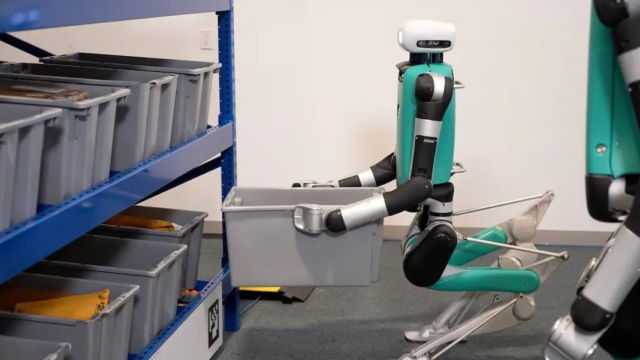Humanoid Robots Transforming Warehouses: Industry Integration and Technological Developments
An important development in industrial automation is the incorporation of humanoid robots in technological operations. These robots are designed to resemble human movements and skills.
Ford, BMW, Amazon, and GXO are set to explore the humanoid robots in their workspace. Whereas, companies like Apptronik, Agility Robotics, Figure, and Tesla are spearheading the robotic developments.
The IT Industry is shifting its focus to using these humanoid robots to address the shortages in labour, improve the effectiveness in operations, as well as carry out several jobs which fall in hazardous or inappropriate situations for human workers. Moreover, these robots have become simpler to train because of the speedy developments in artificial intelligence (AI) and natural language processing. Will these humanoid robots replace manual labour in the near future?
Humanoid Robotics and the Developments in Technology
Some recent developments in robotics, artificial intelligence (AI), and machine learning (ML) have assisted in designing the humanoid robots which will be able to carry out challenging jobs.
With the development in computer vision and natural language processing, the humanoid robots can be better equipped to comprehend as well as to engage with their surroundings.
The ability to educate and train these humanoid robots with reinforcement and teleoperation learning, the robot’s adaptability in the dynamic warehouse settings can be seen further enhanced.
(Source: https://www.reuters.com/business/autos-transportation/mercedes-benz-takes-stake-robotics-maker-apptronik-tests-robots-factories-2025-03-18/)
Important Industry Participants and Implementations
Apptronik
The Texas-based robotics company, Apptronik, introduced its humanoid robot named “Apollo”. This humanoid robot is specially designed for industrial use.
Furthermore, Apollo is being tested by Mercedes-Benz at its manufacturing plants after making investments in Apptronik for several jobs that include moving certain components and performing quality checks.
The aim is to improve productivity in dangerous and repetitive tasks as well as to address the manpower crisis, i.e., labour shortages.
(Source: https://www.reuters.com/business/autos-transportation/mercedes-benz-takes-stake-robotics-maker-apptronik-tests-robots-factories-2025-03-18/)

Image 1: Apollo Robot
Agility Robotics
The robotics industry, Agility Robotics, created a humanoid robot named “Digit”. This robot is designed for handling various materials in different warehouses.
Amazon and GXO Logistics have adopted Digit. The robot showcased its capacity to move certain tote bins. Furthermore, the humanoid robot also navigated various challenges in the company’s warehouses.
(Source: https://apnews.com/article/humanoid-robots-figure-ai-agility-robotics-26f2cdcef4b923f0e44f91799686c8b2)

Image 2: Digit Robot
Figure AI
The recently established robotics company, Figure AI, was dedicated to designing industrially useful as well as all-purpose humanoid robots. The company introduced its humanoid robot named “Figure-02”. This humanoid robot is well-equipped with dexterous hands to effectively handle a variety of objects, as well as vision-language models.
BMW has collaborated with Figure AI to implement the robots in the car industry, which will mould the future of this industry, as their goal is to increase efficiency and resolve labour shortages.
(Source: https://en.wikipedia.org/wiki/Figure_AI)
Image 3: Figure 02 Robot
The Robotics Future
The developments in humanoid robots face challenges, including high costs, technological limitations, and workforce impact. Despite the presence of these challenges, the robots have a future prospect as follows:
The robots can assist the operations in the company’s warehouses. Because of the increase in the automation demands as well as increasing technology, the future of robotics can be seen as increasing. As these robots will further develop, their use in various industries will also increase.
However, collaborations between the industry leaders and the robotics companies (as discussed in the important industry participants and implementations section above) will tend to play an important role in order to improve the technologies and solve the issues related to their implementation.
As a result, despite persisting challenges, the future of humanoid robots appears bright due to the constant robotics technological advancements as well as the strong industry alliances.



